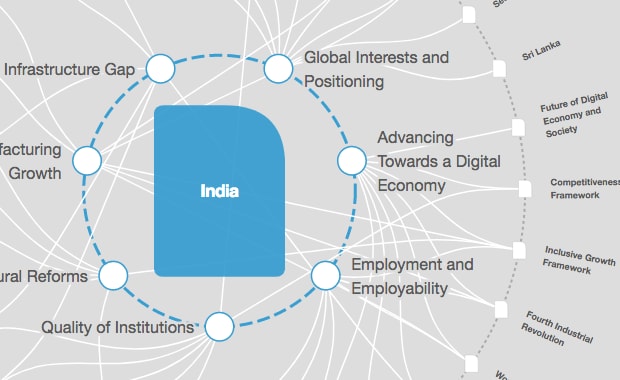India's PM Narendra Modi has launched health insurance for 100 million families

India spends only about 1 percent of its GDP on public health. Image: REUTERS/Saumya Khandelwal
Indian Prime Minister Narendra Modi launched the world’s biggest healthcare program on Sunday, aiming to provide free health services to half a billion poor people, which could boost his chances in national elections early next year.
The scheme, which the government dubs “Modicare”, will provide 100 million families, or about 500 million poor people, with health cover of 500,000 rupees per year for free treatment of serious ailments.
The measures are Modi’s latest attempt to reform a public health system that faces a shortage of hospitals and doctors. The government has also in recent years capped prices of critical drugs and medical devices and increased health funding.
But critics say the scheme has been launched in a hurry for political gain and lacks adequate funds to support it.
India spends only about 1 percent of its GDP on public health, among the world’s lowest, and the health ministry estimates such funding leads to “catastrophic” expenses that push 7 percent of the population into poverty each year.
“This is the world’s biggest healthcare scheme, benefiting more than the combined population of the United States, Canada and Mexico,” Modi said after launching the nation-wide plan from Ranchi, the capital of the eastern state of Jharkhand.
No separate registration would be required for the scheme and the people could check online whether they were eligible, Modi said.
Vinod K Paul, a senior official at the NITI Aayog told Reuters in an interview last week the benefits would be available at hundreds of empanelled private hospitals as well.
“India’s health system is never going to be the same. It’s a turning point,” he said. Private hospitals and pharmaceutical companies expect the plan would boost their business.
The scheme has been called a “game changer” by the chairman of India’s Apollo Hospitals Enterprise, Prathap Reddy, while Jefferies analysts have said companies such as Healthcare Global Enterprises and Narayana Hrudayalaya are likely to benefit.
The plan will be initially rolled out in 27 states, where the federal government will bear 60 percent of the costs and 40 percent would be born by state governments.
Don't miss any update on this topic
Create a free account and access your personalized content collection with our latest publications and analyses.
License and Republishing
World Economic Forum articles may be republished in accordance with the Creative Commons Attribution-NonCommercial-NoDerivatives 4.0 International Public License, and in accordance with our Terms of Use.
The views expressed in this article are those of the author alone and not the World Economic Forum.
Stay up to date:
India
Forum Stories newsletter
Bringing you weekly curated insights and analysis on the global issues that matter.
More on Geographies in DepthSee all
Emi Maeda
December 27, 2024






